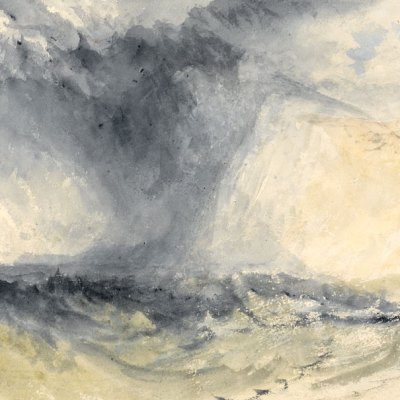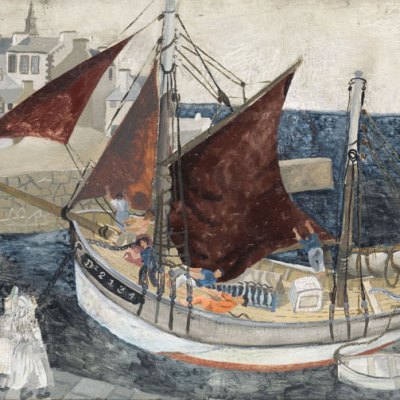A 1930s railway poster promoting holidays in the Lake District is the source of the jacket illustration for the former director-general of the National Trust’s spirited defence of the British landscape. This nostalgic image is not without ironies. It hints at happier times, yet it was the arrival of the railways in the Lake District that prompted Wordsworth and Ruskin to start the fight for beauty in which Fiona Reynolds has been a lifelong combatant.
A more appropriate jacket image would have been a glass half full. Or a glass half empty. On the one hand, Britain has more than a century’s worth of legislation aimed at controlling land use to preserve natural and man-made features that appeal to the heart and eye. We have National Parks, Green Belts, and officially-designated areas of Outstanding Natural Beauty. The National Trust has four million members and 60,000 volunteers, far outstripping all political parties. The Heritage Lottery Fund has spent £6 billion on heritage projects since 1994 and is spending £375 million this year.
Yet much of this book is an account of the limitations and failures of the protections that have been put in place. The glass is getting emptier, as we face climate change, soil depletion, and species loss. Reynolds writes: ‘The uncomfortable, unavoidable conclusion is that nature, and the beauty and diversity of the wider countryside, are in a worse state than when the conservation movement set out to protect them.’
It will be clear from this that the beauty that Reynolds is fighting for is ‘natural beauty’, which, however much the result of the actions of mankind, is not the same as the beauty found in art. It is Ruskin’s beauty, rather than Oscar Wilde’s, and though Reynolds does not make the point, this idea of beauty – much closer to the sublime – still carries inflections of spiritual feelings that have their roots in natural theology. Ruskin is rightly credited with articulating the values that shaped the ideas of the Victorian conservationists whose voluntary organisations – notably the National Trust – prepared the way for state intervention. Ruskin’s influence on people like Labour’s Clement Atlee also helped to shape the post-war wave of legislation following the further depredations of the 1920s and ’30s.
The antagonist in this battle is the aspect of modernity that Reynolds calls ‘economism’ or, in a rare departure from the mild tone of her writing, ‘money’. Its shock troops are precisely the people who have done the most to shape the landscape: farmers and foresters. After Ruskin, her second hero is the historian W.G. Hoskins. Just as the Romantics launched their battle in the face of the Industrial Revolution, in 1955 Hoskins’ The Making of the English Landscape was published as the damaging consequences of the 1949 Agricultural Act and the intensive farming that followed were becoming apparent. The small fields, woods, and hedgerows that (together with the upland pastures and moorlands) are still thought of as ‘English’ landscape, began to disappear.
For Reynolds the battle for this beauty has been personal. She joined the Council (now Campaign) for National Parks in 1980, rose to become director of the Campaign to Protect Rural England, served for two years in the Cabinet Office, and then ran the National Trust from 2001 to 2012. It is a pity this book is not more autobiographical. She complains about being labelled a ‘Blair Babe’ at the Cabinet Office by the Daily Mail (but then who wouldn’t), and at being ‘stitched up’ on a 1994 Commission on the future of farming. But somehow the habitual balance and discretion of a public servant mutes the sound of battle, even though Reynolds led the charge against the coalition government’s proposal in 2010 to sell off the publicly owned forests.
Instead, we are presented with a series of chapters describing the histories of land-use protection and planning, both its successes and failures, from National Parks, to the wider countryside, the impact of farming and forestry, the protection of the coastline, the growth of the heritage industry, and the consequences of urbanisation; Reynolds recognises that town and country are interlocked, and that both need intelligent planning. And however much she objects to economism, she still feels the need to make an economic case, citing research that shows that ‘one of the main drivers of employment and economic activity in the countryside today is tourism or leisure-related, often associated with a historic asset; and moreover that where the National Trust has a presence it packs a significant, sustainable, economic punch’.
Economism is once more on the march, as the 2011 consultation on the National Planning Policy Framework proved. Though the National Trust helped to limit some of the worst presumptions in favour of development, the Green Belt has never been more under threat than it is today. One of the areas where the Trust has been most successful is in the conservation of the coastline, but it has pragmatically accepted the facts of erosion and, in places, surrendered land to the sea. It remains to be seen how far the conservation movement can resist the suck and drag of money.
Reynolds’ simplest and most powerful point is that the word ‘beauty’ has disappeared from official discourse. The last time it was used in government legislation was in the 1940s. Instead we have grey terms such as biodiversity, sustainable development, and ecosystem services. In the ongoing battle for beauty the technocrats may try to avoid the embarrassment of making aesthetic choices, but ultimately, as Reynolds remarks, ‘these are cultural questions, not technical ones’. Ruskin would have added that they are moral ones as well.
The Fight For Beauty: Our Path to a Better Future, by Fiona Reynolds, is published by Oneworld.
From the July/August issue of Apollo: preview and subscribe here.



